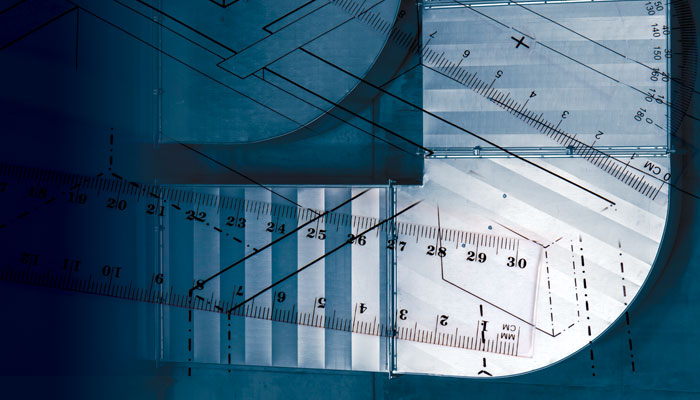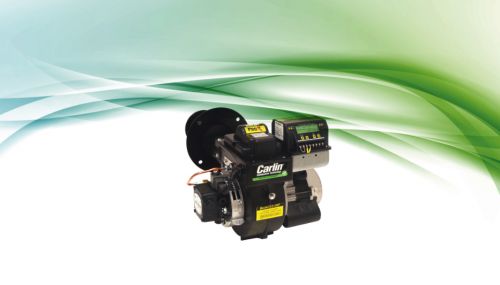All
Know Your Flow
by Ralph Adams, Parker Fuel Co., OESP Education Co-Chair

Hello, energy service professionals. Sorry it’s been so long since I’ve written, but I am a person that needs to be energized about something to put it down in words. So now you’re asking, what has me energized? Airflow, that’s what.
Those who know me know that I do a lot of training and have been teaching duct design classes for a manufacturer for the last year or so. A couple of good friends of mine, Bill Spohn and Jim Bergmann, really opened my eyes to airflow and airflow issues about 10 years ago. Thank you, Bill and Jim for helping me see the importance of these issues, which are so often overlooked. Now I’d like to do the same for Oil & Energy readers.
If you are like many service professionals I have met, you are sitting there thinking you don’t have any airflow issues. Well, I beg to differ, and I’ll bet there are more airflow risks in your installation work than you think. When you gain a mastery of airflow – which you can do – you’ll be much better at installing and troubleshooting high-efficiency heating and cooling equipment. Your customers will notice the difference in both their comfort and their energy bills, and you’ll benefit from great word of mouth.
Could expert airflow practices really make that kind of difference? I believe the answer is yes, because airflow challenges are everywhere, and the companies that get it right are outperforming the competition by a considerable distance.
They’re Your Customers… For Now
How many of you have customers who every couple years have to replace the compressor in the a/c? The first thing the homeowner will say is the old unit was 20 or 25 years old and never needed a replacement compressor. Airflow issue!
A customer with a high efficiency furnace that the heat exchanger needs replacement every couple of years? Airflow issue! The homeowner thinks it’s the unit’s fault, that it’s that “piece of junk” Carrier or York or whatever other unit you can name.
For the contractor, what these issues really are is missed opportunities. When a homeowner chooses to replace a heating or cooling unit, they generally do so for a number of reasons, and one of those is alwaysto reduce energy costs, and they want you to help them get that done.
The Department of Energy (DOE) did a study that found most duct systems are between 60 to 70 percent efficient. That means we are losing 30 to 40 percent of our system efficiency in our duct system. This also means that if you are selling your customers high-efficiency heating and cooling systems without looking at the delivery system, you are not delivering the efficiency that the homeowner is expecting from the equipment – and from you. Instead you are letting them down and probably setting them up for chronic system problems down the road.
We must look at the entire system, not just the equipment in the basement! We need to start by properly sizing our equipment. Bigger is not better. Think about it like this: If we have a heating or cooling system that is too big for the home, it’s like driving a car in the city, where it gets 10 miles per gallon. A properly sized system is like taking the car out on the highway, where it gets 18 miles per gallon – by far its more efficient mode of operation. A load calculation should be done on every estimate we do. The load calculation will give us the size requirement of the building and help us size the heating and cooling equipment. It will also tell us the required cubic feet per minute (CFM).
Retrofit Challenges
My company services hundreds of homes that were built in the ’40s, ’50s ’60s and ’70s, where the ductwork was designed for heat-only systems. In the ’70s and ’80s someone had a “great idea”: Because you have the ductwork, they thought, you could just add an evaporator coil on the furnace and an outdoor unit and, voila, you have central a/c. That was okay for those 5 and 6 SEER units of the day, which were much more forgiving than the high efficiency equipment of today. For today’s equipment, correct airflow is far more critical. Airflow affects your system capacity, operation, efficiency and the life span of the equipment – factors that really matter to your customers.
So now you may ask, how do you know if you have a problem with the duct system? You can do something as simple as a Total External Static Pressure Test (TESP) on the system. This test will take less than five minutes and will let you know if the duct system is something that can handle a high-efficiency unit.
The tools you will need to do this are a drill with a ¼” bit, a manometer and a set of pressure tips. You need to drill two holes into the furnace, one at the top of the furnace below the evaporator coil and the other between and external filter system and the furnace as shown on the drawing. Insert your pressure tips’ positive probe in the supply side and the negative one in the return, and then read the TESP.
Most systems today are designed to operate at .50 TESP. One thing to keep in mind is that the higher the static pressure, the higher the amperage draw and the less airflow you get. Take a look at the drawing (below) of a unit that, in the cooling mode on high speed, is running at .50 TESP. After taking the reading, we refer to the manufacturer’s specifications to find out how much air we are moving.
By the manufacturer’s specifications, the Heil OUF105 oil furnace with the blower speed on high speed at .50 TESP is moving 1,350 CFM. (See chart, above.) If this duct system had a 4-ton a/c system you would have a problem, as this duct system would be good only for a system under 3.5 tons. We should be doing this test on every estimate we run. Our installers should be doing this test after every installation completed. Commercial contractors have been doing these types of test for years.
Commissioning Reports Really Matter
If your company does a lot of installations, consider developing a commissioning report. After my technicians complete an installation they fill out a commissioning report every time. This report requires them to test and document the readings they get for each installation. For example my techs must do a TESP and document the reading in the supply, return, TESP and the CFM produced in that duct system. They also have to document the indoor and outdoor dry bulb and wet bulb temperatures. The pressure readings at the outdoor unit along with the superheat and if applicable, sub cooling readings, are documented as well: on the furnace, the return and supply temperatures along with the temperature rise across the heat exchanger. All this information is kept in the homeowner’s file.
I recently had a warranty issue with a piece of equipment, and the first thing the manufacturer asked for was my commissioning report. I think they were surprised when I produced it, but it helped me get my labor charges from the manufacturer. As everyone is looking to cut costs, the easy way for a manufacturer is to deny a warranty claim. Let’s face it, manufacturers are covering a lot of compressors under warranty that failed due to causes not of their making. Installing a high-efficiency system into an inadequate duct system is asking for trouble. One of my favorite sayings to a homeowner is, if they have a problem I have a problem, and I don’t need any more problems. If I do the installation, the only time I want to hear from them is once a year to schedule a servicing of the equipment.
So now you may be asking what constitutes a bad duct system? Any duct system that is operating in the .70-.80 TESP range or higher is too high and is going to give problems. How can you figure out where the problem is? Say we have a system with a TESP of .81. We remove the probe from the supply and leave the negative in the return, and our TESP is now .59. Now reinstall the probe in the supply and remove the probe in the return. The TESP now drops to .22. There is a problem in the return, that’s where you need to look. Maybe the homeowner has a piece of furniture in front of a return air grill blocking it or there is a problem with the ductwork. But at least you know this before you prepare your bid, and you can explain to the homeowner what you need to do (add a return and how and where); why you need to do it (to deliver the efficiency of the high-efficiency equipment); why your price will be more than the others (because you believe in delivering efficiency and saving your customers money). Homeowners will pay more money for something. They just want to understand what they are paying for and most of the time we don’t do a good job of explaining to the homeowner what their money is buying them.
How Word of Mouth Really Works
I had a women call me the other day and say she had a new system installed by another company seven days ago, and that the company had been out three times, and the unit still would not cool the home. She was looking for someone to check out the unit and see what the problem was, since the installing company could not make it work. When I arrived at the home I could hear the indoor unit screaming. The homeowner proceeded to describe the three service technicians and what each had done. The first technician told her that the unit was low on refrigerant, he added what was needed and left. The next day the unit was still not cooling the home so she called again and another technician came out and said the “idiots” never set the airflow, which he then did and added more refrigerant to the system and told her it would start cooling the home. The next day the unit still would not cool the home down, so she called again. A third technician came out and told the homeowner that he didn’t know what was going on but he would be back with his boss. Only problem is he never came back.
The homeowner waited for three days and then started talking to friends to figure out what to. Once she called me, I asked for the installation package the installers gave her. I performed a TESP test with the speed on high and found the unit operating at .78 TESP. According to the manufacturer’s specifications the maximum TESP the unit should operate at is .70. I lowered the speed to medium and the TESP dropped to .58, which meant that, according to the manufacturer’s specifications, the unit was moving approximately 1,220 CFM. Still more than required for the 2.5 ton unit I was working on. I then moved the fan speed to low and TESP dropped to .41. I now was moving 990 CFM, which was perfect for the 2.5 ton unit. I proceeded outside and connected my refrigeration gauges to the unit and had to remove almost 5 pounds of refrigerant. I told the homeowner my findings and that everything should be working properly.
The next day the homeowner called me to say how great the system was now working and that she has never had a system work like this before. The last thing the homeowner said to me was that every person she knows will know about my company and the way we do things and make equipment operate.
If you are going to sell high-efficiency equipment, you need to look at the complete system. You can’t install a high-efficiency unit into a poor duct system and expect to have it operate at the rated efficiency. This is why systems are rated by the manufacturers and AHRI: The ratings must include a specific indoor unit, outdoor unit and furnace or air handler. How all these system operate together and the energy to operate them is how the ratings are figured. The only thing not in that equation is the duct system. That’s our job to check and inspect.
Changes You Can Make
I hope this makes every contractor out there think about how they do business. Start with a few changes.
- Have your salespeople get trained on how to measure TESP. Find the problems before they become your problems! How many times have you heard that the old system never did that, or we never had a problem like this with the old unit!
- Measure every home you go in, and do load calculations on every job! This is a great opportunity to find out exactly what the homeowner is looking for. Remember: Bigger is not better. There is absolutely no use in selling a high-efficiency unit that is not properly sized – and almost every heating system is oversized! If it wasn’t when it was installed, chances are the homeowner has installed newer windows or added insulation to the attic. (If not, make that recommendation.) It’s not always about the money, despite what we sometimes think; it’s about saving money.
- Develop a commissioning report (below) for every installation you do. This is an easy way to check your installers’ work without going to the job, and it gives every tech going out to that job a baseline off which to work.
- Offer your homeowners options! Do not go into a home with just one piece of equipment. Offer them good/best or good/better/best. When your wife goes to buy an appliance, does she look at only one model? No she does not, at least not if she’s my wife. We look at hundreds! Give your customers the same thing you expect: a choice of different models and features.
- Selling high-efficiency and truly delivering it will set you above everyone else. If you cut a homeowner’s operating cost by 30, 40 or even 50 percent, they will tell everyone they know. They will be the best advertising for your company and will not cost you one penny. Don’t sell on price; sell high-efficiency and comfort, and deliver by checking the complete system.
The National Association of Oil & Energy Service Professionals (OESP) has a great program called The Home Comfort Specialist Academy for salespeople and your top techs. Too many times salespeople judge how much a homeowner is going to spend before they walk in the door. Don’t prejudge, lay it all on the table, and let the homeowner choose.
Related Posts
 Burner Questions? The Answer Is in Your Hands.
Burner Questions? The Answer Is in Your Hands.
Posted on April 17, 2024
 Carlin Begins Production on UL Listed B100 Burners
Carlin Begins Production on UL Listed B100 Burners
Posted on December 7, 2023
 NORA Looks at Indoor Air Quality
NORA Looks at Indoor Air Quality
Posted on December 7, 2023
 Why Market Renewable Propane for Your Business?
Why Market Renewable Propane for Your Business?
Posted on October 6, 2023
Enter your email to receive important news and article updates.
